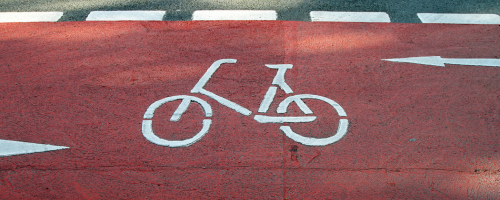New Legislation Targets Dangerous Cyclists
The government has introduced new legislation that could see cyclists who cause serious harm or death due to dangerous riding face life imprisonment. This move is a significant step towards safeguarding pedestrians.
In a clear demonstration of their commitment to road safety, the government has thrown its weight behind an amendment to the Criminal Justice Bill. This amendment, proposed by Sir Iain Duncan Smith MP, is designed to ensure that cyclists are held to the same standards of accountability as drivers and motorcyclists.
The new legislation introduces offences such as causing death or serious injury through dangerous, careless, or inconsiderate cycling, with penalties on par with those dangerous drivers face. This move is expected to significantly enhance pedestrian safety, particularly for those who are often the most at risk on the roads.
Why This Change Matters For Cyclists
Currently, if a cyclist injures a pedestrian, the pedestrian often has no recourse. This new law addresses a critical gap in road safety regulations, ensuring that we hold cyclists who recklessly endanger others accountable.
Transport Secretary Mark Harper emphasised the importance of responsible cycling: “While most cyclists are responsible, the few who act recklessly must face appropriate consequences.” He further added, “We are backing this legislation introducing new offences around dangerous cycling. These new measures will help protect law-abiding cyclists, pedestrians, and other road users, whilst ensuring justice is done.” This highlights the role of responsible cyclists in supporting the new legislation and promoting road safety.
The Push for Greater Accountability
The amendment has garnered support from various safety advocates and organisations. Ross Moorlock, CEO of Brake, the road safety charity, remarked on the importance of robust sentencing for reckless behaviour on the roads. He also pointed out the broader issue of road safety and the need for a comprehensive strategy to reduce casualties across all road users, acknowledging their concerns and the need for a holistic approach.
Moorcock said, “Every road death and injury is devastating for the families involved, and we welcome robust and fair sentencing for any road user who kills or harms through reckless behaviour. However, it feels that the focus being given to this announcement – by both Government and the media – is disproportionate given the true extent of road casualties across the UK, and the lack of commitment from this Government to address road safety at a strategic level.
“If the aviation or rail industry had the safety record that roads do, planes would be grounded, and trains would be stopped.
“Given the Government is so eager to act on dangerous cycling, we ask that they now continue this trend, by introducing further legislation that ensures that we see a significant and sustained reduction in road death and injury both this year and in the years to come.”
Improving Pedestrian Safety
While this legislative change is a positive step, pedestrians must remain vigilant and follow safety best practices. According to safety experts from the Royal Society for the Prevention of Accidents (RoSPA), here are some tips to enhance pedestrian safety:
- Stay Alert: Always be aware of your surroundings, especially when crossing streets.
- Use Pedestrian Crossings: Use designated pedestrian crossings and wait for the green signal before crossing.
- Avoid Distractions: Put away your phone and headphones while walking, particularly near traffic.
- Make Eye Contact: Make eye contact with drivers before crossing in front of their vehicles to ensure they see you.
Safety Tips for Cyclists
Cyclists also have a role to play in ensuring the safety of pedestrians and other road users. RoSPA recommends the following safety measures for cyclists:
- Wear a Helmet: Protect your head in case of a crash or fall.
- Use Hand Signals: Communicate your intentions to other road users using hand signals.
- Keep Your Bike in Good Order: Regularly check that your bike works well.
- Follow Traffic Rules: Do not ride through red lights and adhere to all traffic regulations.
- Stay Visible: Use lights after dark and wear reflective clothing.
Floating Bus Stops and Cyclists
This month, cyclists also made the headline after campaigners called for the ban of ‘floating bus stops’ in London.
This type of bus stop has a cycle lane between the stop and the pavement, allowing cyclists to continue riding while passengers have to cross to embark and disembark from the bus.
Transport For London has funded 160 of the stops, but The National Federation of the Blind UK (NFB) has produced a petition to redesign cycle lanes around them due to safety concerns.
A Call for Comprehensive Road Safety
While the new laws for cyclists are a crucial development, it is clear that the government needs to do more to enhance road safety comprehensively. The government’s commitment to a Road Safety Strategy remains unfulfilled, and further measures are necessary to protect all road users. As Brake’s CEO aptly noted, if other modes of transport had the same safety record as roads, there would be immediate action to address the issues.
The introduction of this legislation is a welcome development, but we should consider it as part of a broader effort to make UK roads safer for everyone. Cyclists, pedestrians, and drivers alike must adhere to road safety rules to ensure that our streets are safe and accessible for all.
NV Legal
If you want further information on any issues covered, contact us for a FREE, no-obligation consultation. A solicitor with extensive experience in cycle and road accident cases will help with your query.
Call – 03330 112 732
Email – info@nvlegal.co.uk
Website – nvlegal.co.uk


